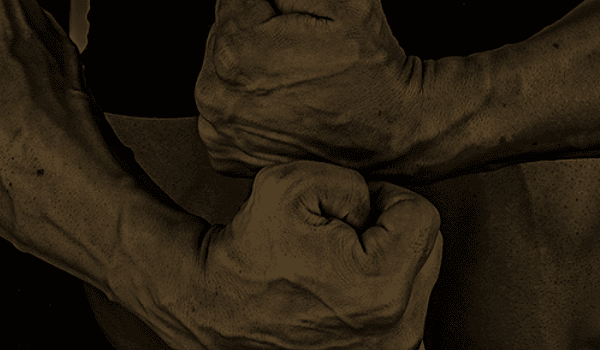
Grip Pressure in Golf Warning – Keep the Baby Bird Alive!
Old-timers had a huge advantage over us playing golf in the 2020s. Their heavy, unforgiving equipment forced them to swing with natural power dynamics. Ever tried swinging an extra-heavy club? Ever considered how grip pressure in golf can completely make or break your swing?
Sam Snead famously said you should hold the club like a baby bird, and while parts of that are true, it doesn’t always align with our need for control. Why is that, and how should you approach it?
For reader context: this article is a part of the FMM Swing System Page. I recommend that you start here instead.
High Grip Pressure in Golf – The Natural Power Killer
xcessive grip pressure in the downswing and follow-through stifles your natural swing. The only way to generate effortless power in golf is by allowing the forces in the club shaft to release naturally. You load these forces in the backswing and early downswing, and they need to be set free—otherwise, you’re left with a manipulated, forced motion.
Of course, it’s entirely possible to create power with high grip pressure, but it comes at the cost of the effortless clubface control that the old greats mastered.
High Grip Pressure in Golf – The Go To Control Factor
We are naturally inclined to control, and holding onto something tightly is an extension of that instinct. For 30 years, I played with increasing grip pressure, believing that adding pressure at impact would give me control over my shot. Paradoxically, this habit led to a massively rotating clubface, which not only made my scoring unpredictable but also resulted in serious injuries over time. My temporary fix was to close the blade in the backswing, but this only introduced a new set of problems.
The key takeaway is that true control isn’t achieved through gripping tighter. Instead, it comes from understanding how to use the wrists and arms correctly. The old greats approached this completely differently from most skilled amateurs today—primarily because they had to, given their equipment and the extremely spinny golf ball of their era.
Today, I play with almost spaghetti-like arms in the downswing and follow-through, and I’ve never felt more in control of my swing.
Low Grip Pressure unlocks Natural Power and Athletic Ability
Do whatever you want in the backswing (unless you’re closing the blade—then, please, keep it neutral). Do whatever you want in the turn. But once you’ve moved through the transition, release all intentional grip pressure. I mean everything.
Why? Because it ensures natural power output and, even more importantly, unlocks your athletic ability. Releasing grip pressure in the downswing removes the blockers in your motion. When you’re in a relaxed state—both mentally and physically—you gain the ability to control the club the way you truly want.
Ever heard the idea that the golf swing release is like throwing a meatball into your own mouth? As crazy as it sounds, that’s exactly how it works—and it only happens with light grip pressure. The key takeaway: when you understand that reducing grip pressure is essential for natural power and athleticism, your subconscious urge to hold onto the club too tightly will fade. Over time, you’ll reach the sweet spot where you consistently hit great shots at your intended distance—while still feeling like you had 20% more in the tank.
Grip Pressure in Golf and Injuries
If you perform a golf swing with the ambition to extend your arms towards the target using high arm pressure (heavy arms as I call it), unless you’re exceptionally strong, you’ll likely face injuries over time. However, if you perform the same action with low arm pressure (soft arms), you avoid most of those issues. The heaviness or softness in your arms is influenced not only by your grip pressure but also by your club intentions.
Can you think of one great player (arguably the greatest) who had to cut his career short due to multiple injuries, and who was actually instructed to use high grip pressure to cope with tournament pressure? Tiger Woods.
On that note, here are my best take aways regarding lower back pain and golf.
Wish to get back to The FMM Swing Page?
More FMM Swing Articles

The Golf Swing Timing – Allowing Natural Forces To Shine?
When you’ve played your best golf, it probably felt like nothing. Your golf swing timing was so on point that you could simply play the game without overthinking. You’ve likely hit 5–10 shots in…

The Golf Swing Plane and Circle: Natural or Manipulated?
The golf swing is a bit strange in that some of the observed behavior just happens, while other aspects are enforced or acted upon. You have the observed golf swing plane and the circle…

Swing Intentions – The Missing Piece for Great Golf?
Ever thought that what professionals (or the awesome players at your club) are doing isn’t quite the same as what you’re doing? Ever wondered if you can accurately draw conclusions about someone’s swing by…
Some General Swing Tech Posts (with Videos)

Automatic Body Rotation – A Natural Result of the Right Intentions
Automatic Body Rotation – An Outcome of using the Swing Arc There are many different swing styles, but the classic golf swing was built around one key principle—utilizing the swing arc. If you are…
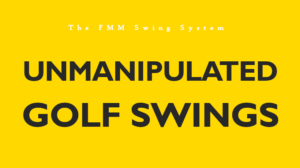
Unmanipulated Golf Swings = Your Natural Stock Shot
Unmanipulated Golf – the Holy Grail? If you know how to generate and accelerate power effortlessly, you’re on the verge of playing unmanipulated golf. One of the biggest advantages is developing a natural stock…

Abstract Golf Beats Mechanics – Feel Over Technique
Abstract Golf – What the H*ck do I Mean? Being too mechanical and overly internalized makes both the game and performance suffer. Most importantly, it takes you out of the moment and makes you…
Golf Development Consulting
I offer some services for you that are into golf technique and want some assistance.

Deep Analysis / Jungle Guiding – Golf Development Consulting
The Deep Analysis / Jungle Guiding is about dealing with information overload. One of the biggest problems with doing it yourself and “not going as deep as you need to” is that you start taking someone…

Show Stopper Analysis – Golf Development Consulting
The Show Stopper Analysis is for you that simply don’t know what’s going wrong. I don’t charge anything for this and perform my analysis round once a week. The Deep Analysis / Jungle Guiding is for…
General Article Collection Pages

DIY Swing Change – Advice on How to Successfully Change
Do It Yourself, DIY Swing Change, is what has driven me the last decade in my golf swing development. The absolute enjoyment of figuring out a swing change myself. To all of you out…
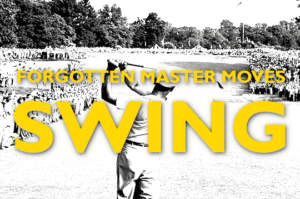
The FMM Swing – Reviving Old-School Secrets for Modern Golf
The FMM Swing system is the result of my mission to understand the inner workings of the old-school greats—and to adapt them to modern golf. I spent eight years figuring it out and two…

Golf’s Best Systems – Much Needed Golf Technique Context
I categorize golf motion styles into systems for the sake of clarity and understanding. No golfer fits perfectly into a single system, but without a structured framework, you’re essentially shooting in the dark. These…
Old School General Articles
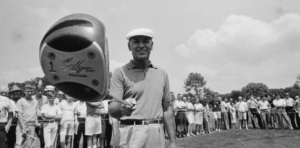
Ben Hogan Swing Rebuild – The Breakthrough That Changed Golf Forever
Nothing in golf quite compares to Hogan’s dominance in the 1940s and 1950s. The Ben Hogan swing rebuild, which he eventually shared through Five Lessons and other insights, shook the golf world—but without the…

The Death of the Swinging Motion – A Resurrection Possible?
If you’ve read my golf’s greatest swingers article you see that I highlight changes to the golf swinging motion happening roughly between 1970-1990s. You could basically call this the death of the swinging motion….
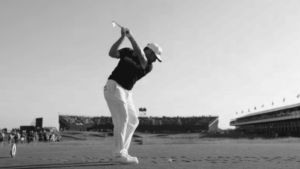
Old School Swinging Elements on Tour – A Modern Case Study
Modern top tier golfers definitely display old school swinging elements of the old greats. These swing styles are making their way back to the leaderboards today. How to spot Old School Swinging Elements? Once…